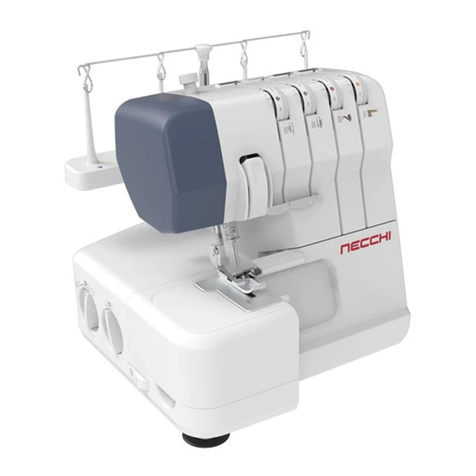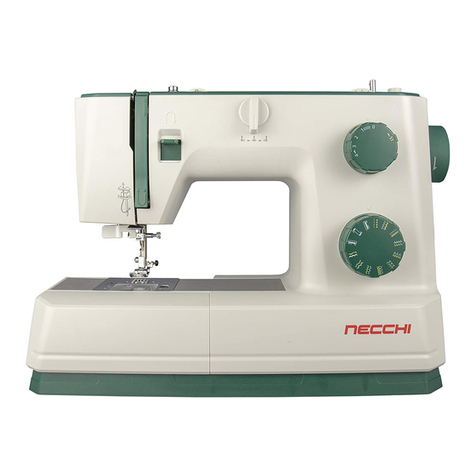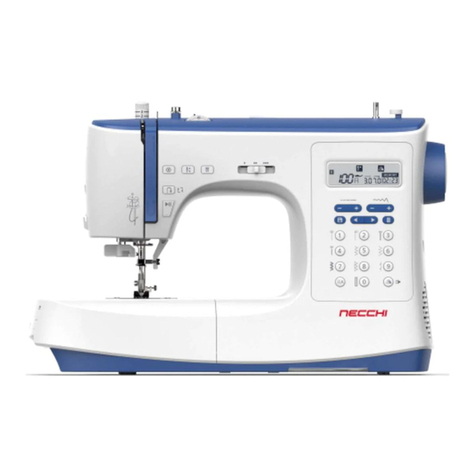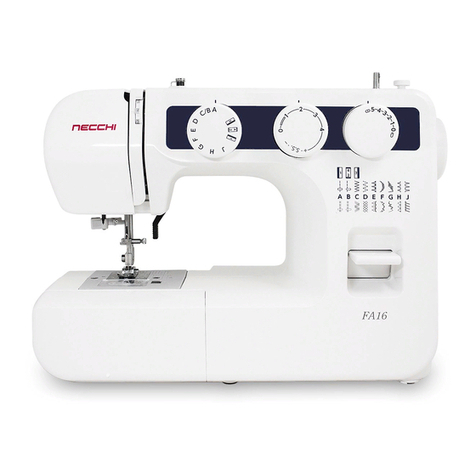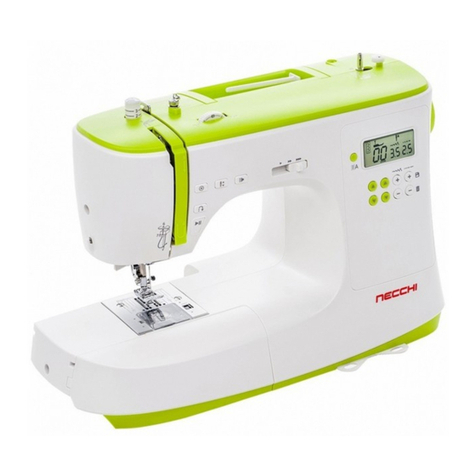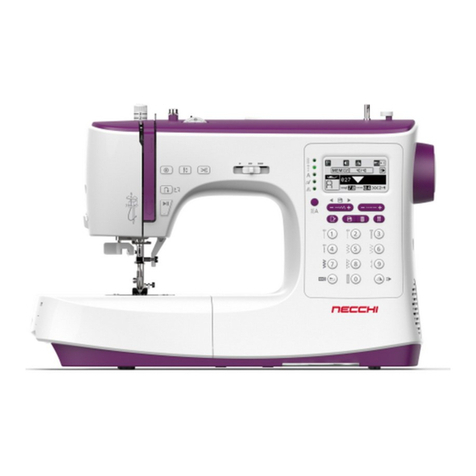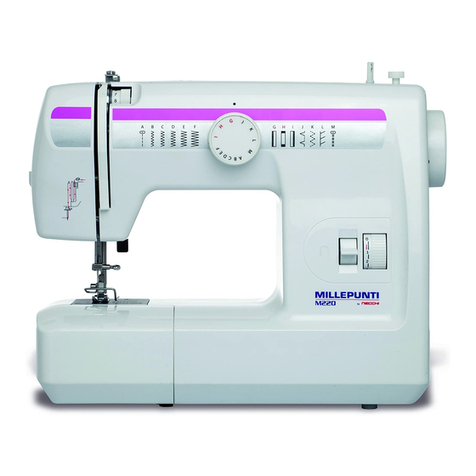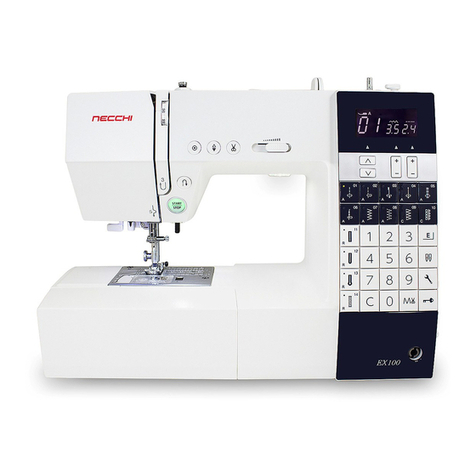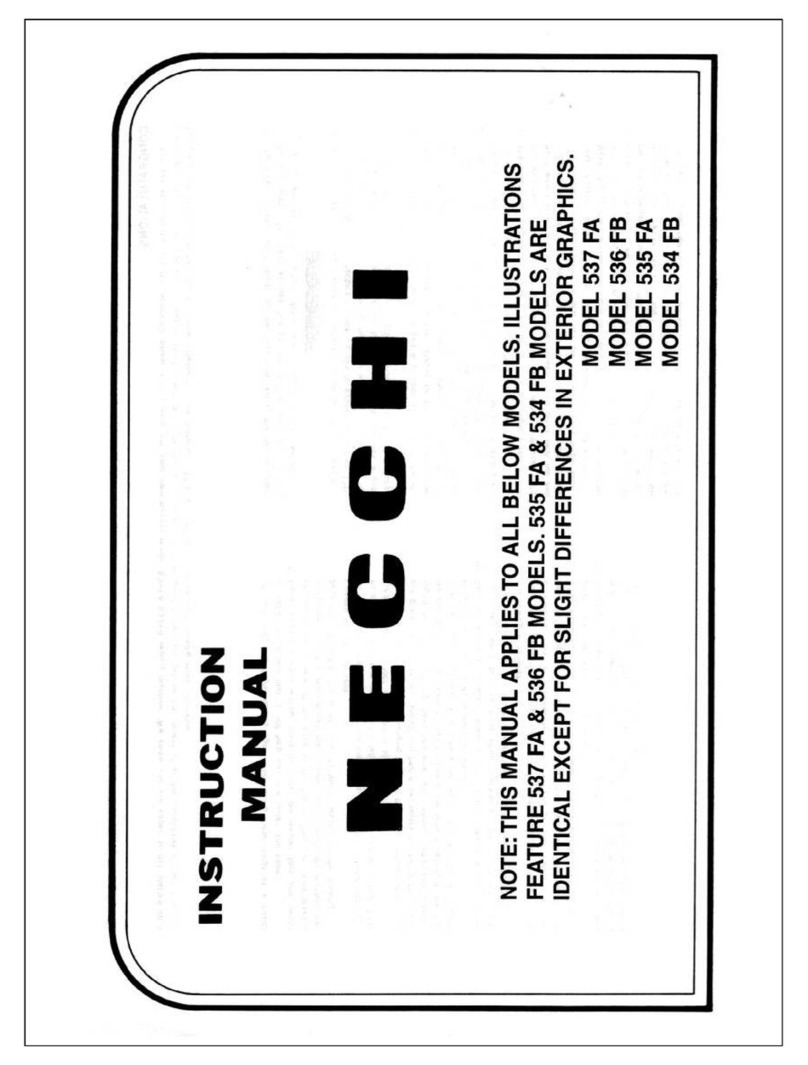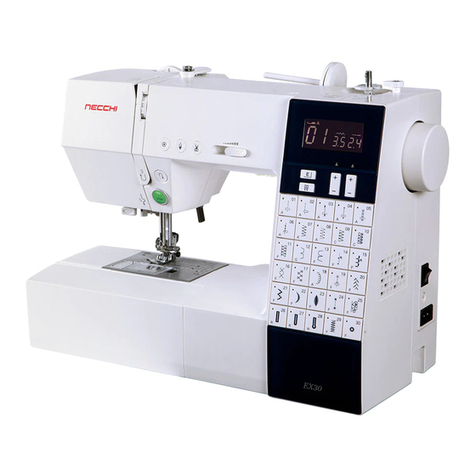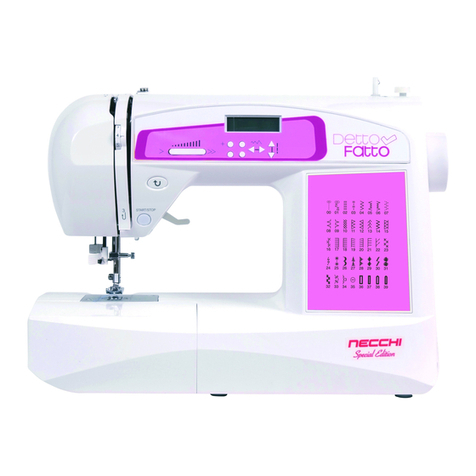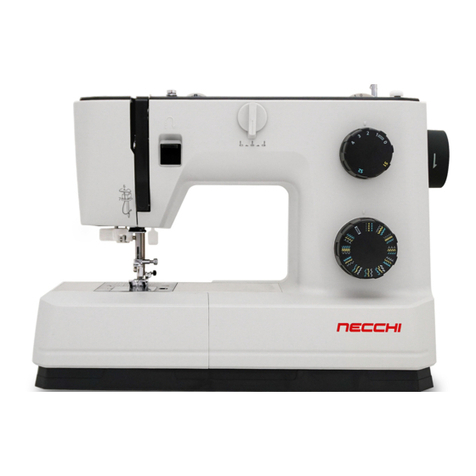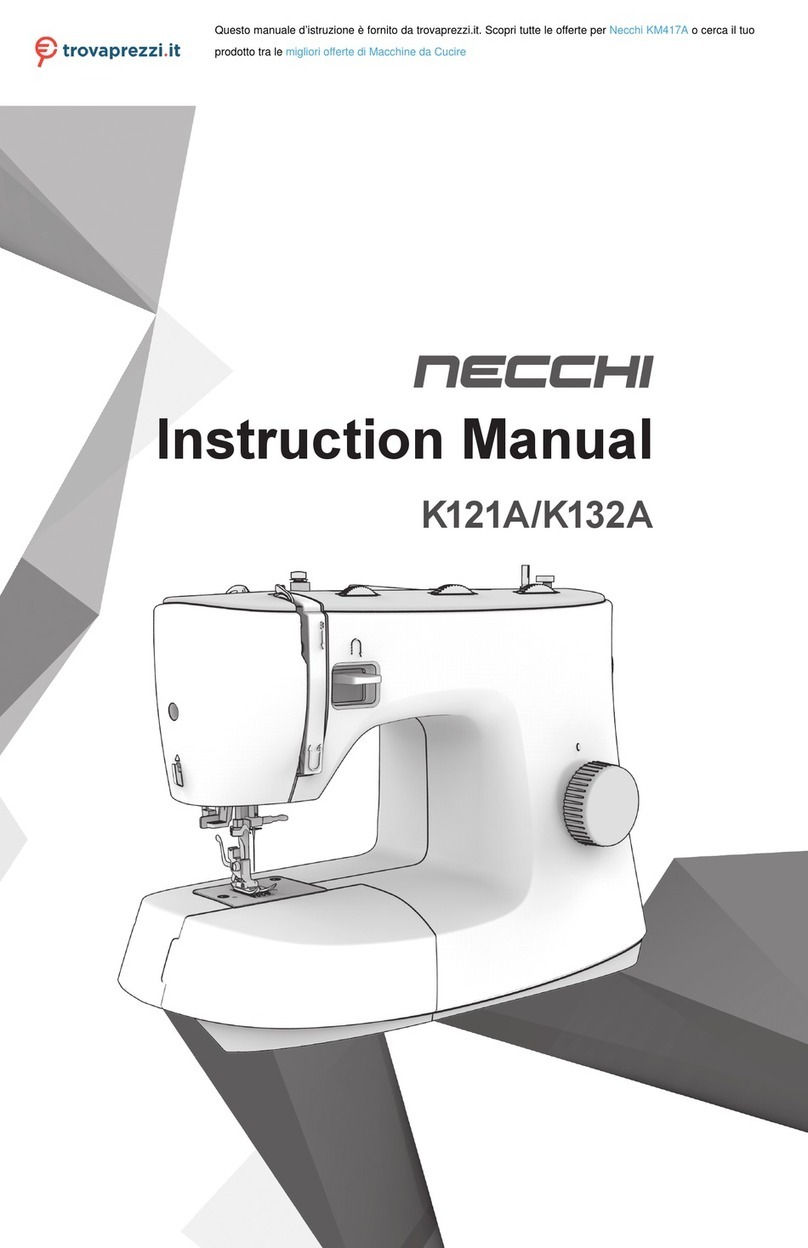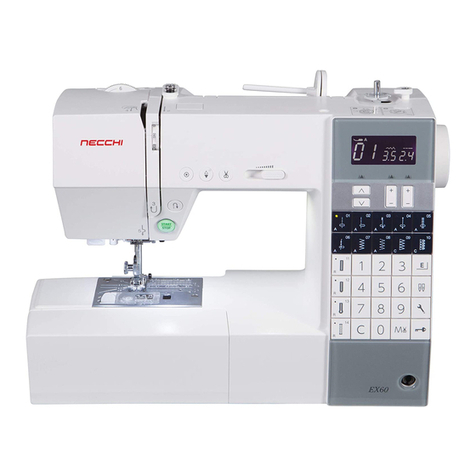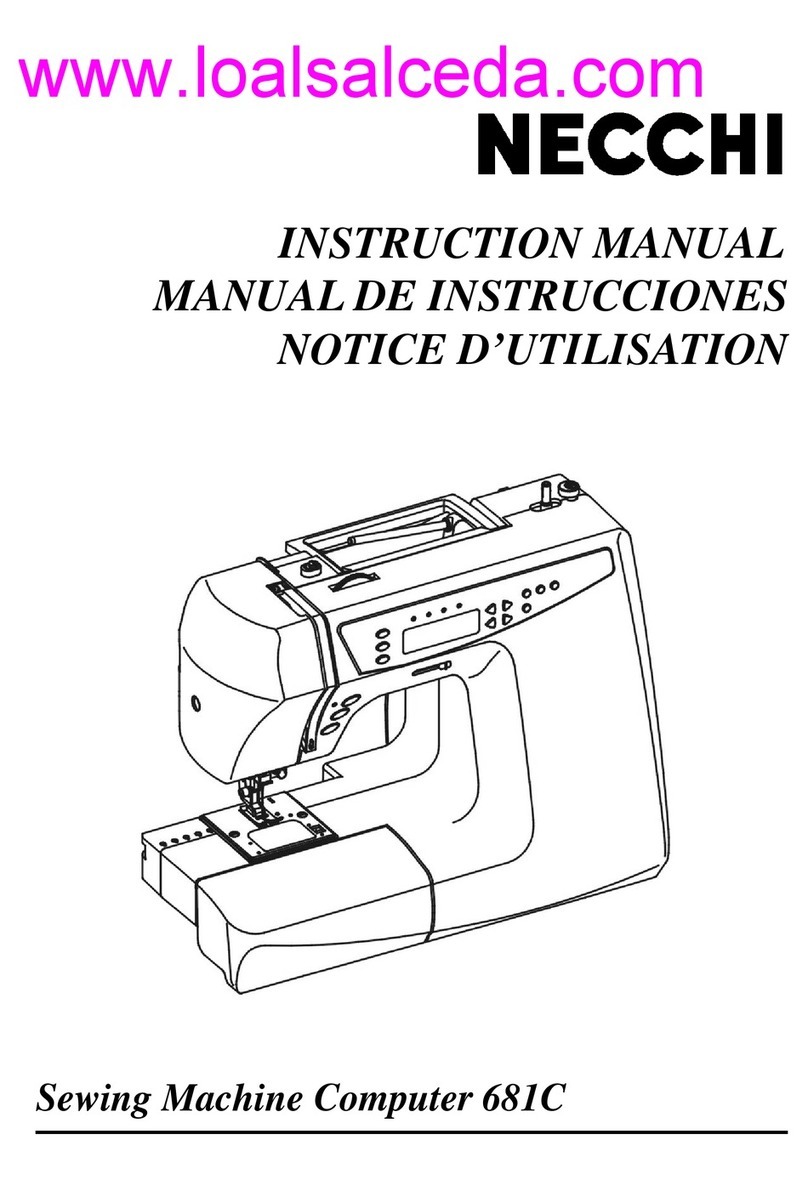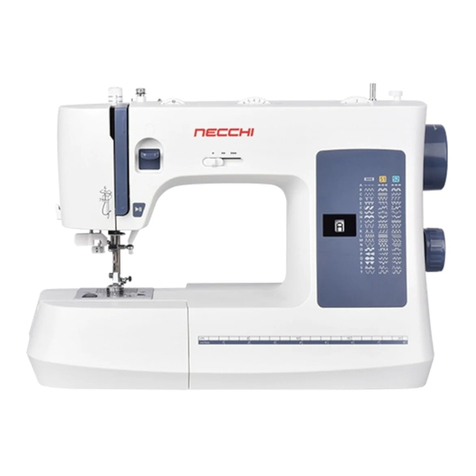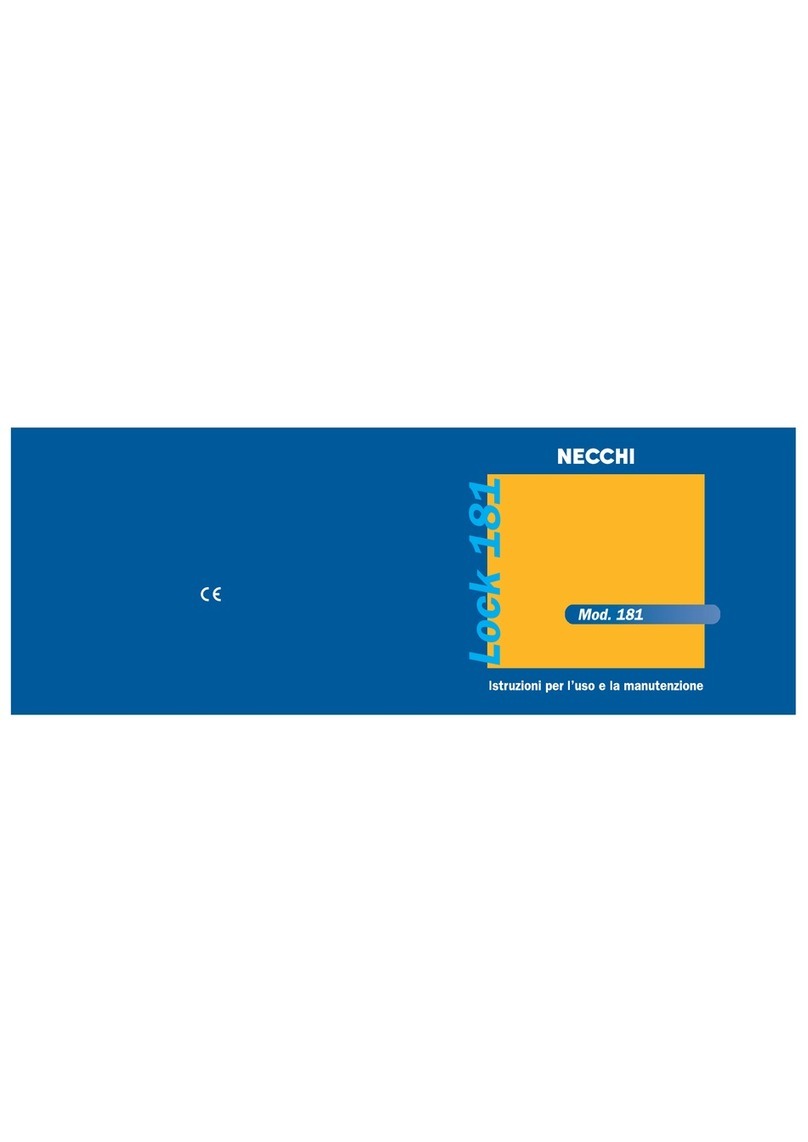
2. RECOMMENDED
NEEDLE
AND
THREAD
SIZES
Types
of
Fabrics
and
Uasaes
of
Work
Very thin fabrics
like
muslin, chiffon, batiste,
line
linen
cambrics.
For
lingerie, infants'
wear
and
delicate lace
work.
Shirtings, sheetings, calicoes,
silk
and cotton,
light
weight
woollens.
For
general
household
sewing
and
all classes
of
general
work.
l lcavy rnlirncs and
silk,
light
weight
woollens,
heavy cretonnes, muslin, brocades
and
quilts.
For
men's
work
shirts, smocks
and
aprons,
quilting
and fabric furnishing.
Bed tickings, upholstery
and
awning material,
slip
cover
fabric, woollen goods, heavy woven
coating, light weight canvas.
For
trousers, boys'
clothing,
work
uniforms,
awning
and slip
covers.
Heavy tickings and woollens, heavy woven
suiting
and coating, canvas and sacking. For
heavy
clothing
in general, such as heavy uni-
forms, coats, trousers,
bedding
supplies, bags
etc.
NE
CC
HI machines use
Syst
.
1
S x 1 or Syst.
705
need
les
Sizes
of
ThretJd
Sizes
of
Needles
Mercerized
Cotton
Silk
Syst.
15xl
Sys
t.
705
80
to
150
60
to
80
40
to
60
30
to
40
24
to
30
0
and
000
Twist
A&B
Twist
c
Twist
D
Twist
I
T!ist
I
10
70
14
90
I
16
100
18
110
19 120
~~
3. TO INSERT
NEEDLE
-
Bring
needle
clamp
to
its
highest
position
by
turning
balance
wheel
towards
you:
Fig
. 4
4
-
Push
button
" P " (Fig. 4);
Push
needle
up
into
needle-clamp
as
far
as
it
will go and
release
button
"P
";
IMPORTANT:
flat side of
needle
shank
must
be
turned
toward
the
ri?ht.
4.
TO
THREAD MACHINE
l?as~
thread
through
points
shown
in
Fig.
5.
After
hav-
ing
passed
thread
between
tension discs
housing
• C ",
hold
thread
between
the
two
thread
guides " A "
in
the
same
time slightly
pulling
thread
towards
the
right
so
that
it
pulls
up
sprir;ig·
i<:M,,
and
places
itself
astride
of
pook
" D
".
The
.
threading
. of
spring
." M "
is
-automati.cally
per-
forilied
on
the
conditiqn
that
tension
regulating
knob
be
at
least
on " 4 ".•
Pass
thread
through
needle
eye
from
left
-
to
right
leav-
ing
about
4 inches
hanging
free. ·
· Fig. 6
..
(~'
. ••
...._r.·
"'
··.
.•
•
•
•
•
•
;/
- F
~
~
Fig.
5
5.
TO
.THREAD
NEEDLE
. WITH .
:rHREADER
..
-
Bring
rie"
edle
t~
its ·
highest
p6sition
and
thread
take-up
lever
u E "
in
correspond-
ence
~ith
mark
Ilne • N "
on
front
plate
(Fig. 5); .
-
Bring
levers
" B "
and
« C " (Fig. 1) to
the
left
and
remove
cams;
-
Rotate
button
" R " (Fig. 6);
hook
« S "
will pass
through
needle eye;
-
Pas~
thread
·
on
hook
·•·S » ·
.and
.·
draw
.
threader
away
from
needle
in
"tlte direc-.
tiori of
the
!irrow,
rotating
button
. " R ".
NOTE:
Th~
·
magn.ifyi~g
glass
((
L"
can
'
he
lowered
and
·
turned,
to see whetl:ier
thread
has
been
proper]"
ca~ght
by
ho
.
ok
« S
!'.
~
5
.·•
.
~~~.
..
• • •l'fl
I
·.

